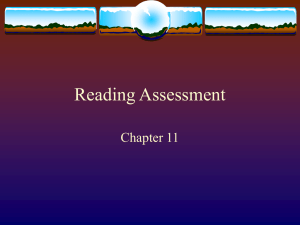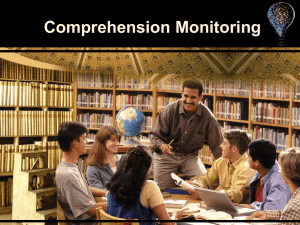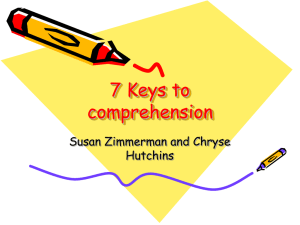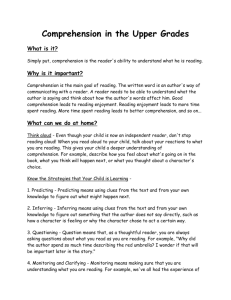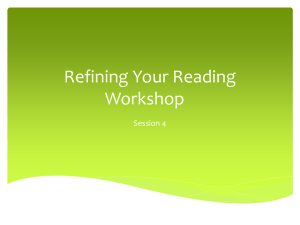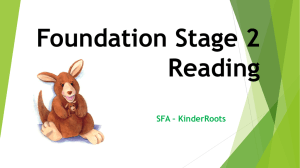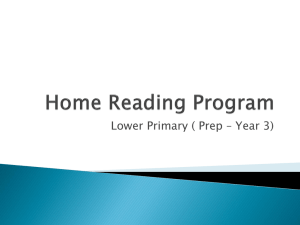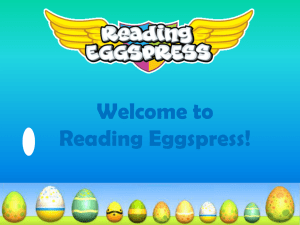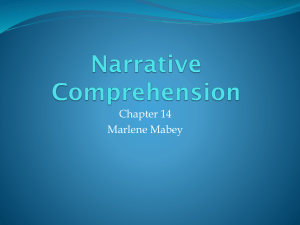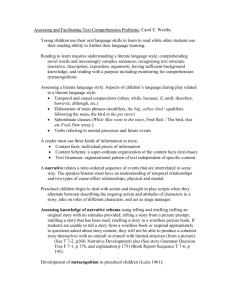Chapter 14 Huntsman
advertisement
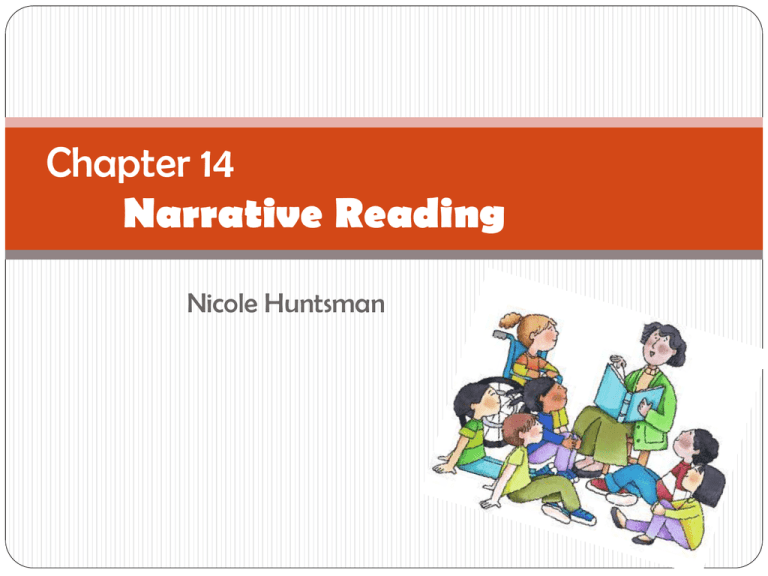
Chapter 14 Narrative Reading Nicole Huntsman What? Narratives are used to tell stories and can be factual or author invented. Story structure is how the story is organized. This organization helps students pull important details from the text and make generalizations. Story elements include: Setting: the when and where Characters: the who or what (protagonists and antagonists arise here) Plot: the problem or conflict, sequence of events to overcome conflict, and the resolution Theme: the BIG IDEA the author is trying to convey Recognizing Story Structure Recognizing story structure aids students in their ability to ask and answer questions, monitor comprehension, predict and preview, make text connections, construct mental images, and retell or summarize. Strategies before, during, and after reading: Story maps can help in recognize story structure by creating a visual aid. These can be used effectively both before and during reading. Asking questions encourages active reading. Answering questions helps jumpstart student thinking to push for deeper analysis. Bloom’s Taxonomy serves as an aid in question formulation. Strategies before, during, and after reading cont. : Monitoring Comprehension tracks progress of understanding. Connecting to World Knowledge Helps students to understand text by making connections to their lives. Predicting helps focus students attention while they are reading text. Constructing Mental Images increases students’ chance to follow text and maintain understanding of events. Summarizing helps assess student comprehension as well as guides towards deeper understanding of the text. Developmental Levels of Summarizing Emergent Focus on event listing and sequencing Introduce basic story elements o Early Fluent • Help students apply basic elements in both written and oral forms • Introduce main event identification • Model and guide retelling events • Fluent • Introduce plot summary • Practice refining sequencing and other elements in retelling Multiple-Strategy Instruction Program: TSI TSI = Transactional Strategies Instruction TSI covers a wide range of theories, all involving “transactions.” Transactions include: Those between reader and text, Those between readers, and Those between reader and instructor. TSI Strategies Reader Response Personal interactions with the story Discussion Oriented Instruction Teacher directed questioning Student directed questioning Open ended questions Writer’s Response Personal, Narrative, and Critical Why? Understanding story structure is important because it helps students to: Remember the story. Understand “sameness” across a variety of texts. Understand the author’s message in a broader context. When? Comprehension instruction should begin at earliest levels of text interaction and continue throughout education. Comprehension instruction must be presented with reliable assessment HOWEVER… Most tradition assessments are inadequate in that they: Confuse comprehension with vocabulary, background knowledge, and other reading skills. Fail to represent the complexities of comprehension. Do not explain why or where a student may be struggling. How to supplement formal assessment Use informal assessments like: Retellings Student think-alouds Process-focused practices These will help better identify areas of strengths and weaknesses. How? Multiple strategies are available to aid in Narrative Reading Instruction. CROWD – Teacher prompted questioning Completion, Recall, Open-Ended, Wh- (who, what, when, where), Distancing PEER – Student retelling of story Prompt, Evaluate, Expand, Repeat Scaffolding – Slowly turning over reading to students after repeated readings For detailed lesson plans on teaching students to recognize story structure as well as utilize it to enhance comprehension, see pages 651-680 of the text. These lesson plans discuss the following tools: Story Maps Theme Identification Questioning (used after story map completion) Comprehension Strategies and Questions in multiple forms Prediction Activities Think-Alouds Lesson Tools cont. “Fix-Up” Strategies (encouraging students to problem solve while reading) Choral Readings of story Book Club Written responses that are personal, creative, and critical Tripod Response Sheets (support Book Club writing tool) Conclusion Teaching students to recognize story elements in narrative texts encourages good reading practices from the first introduction into reading and all the way through education. While assessment is necessary, traditional assessments are often ineffective and need to be accompanied by more engaging informal assessments Comprehension strategies are best taught in a variety of ways.

